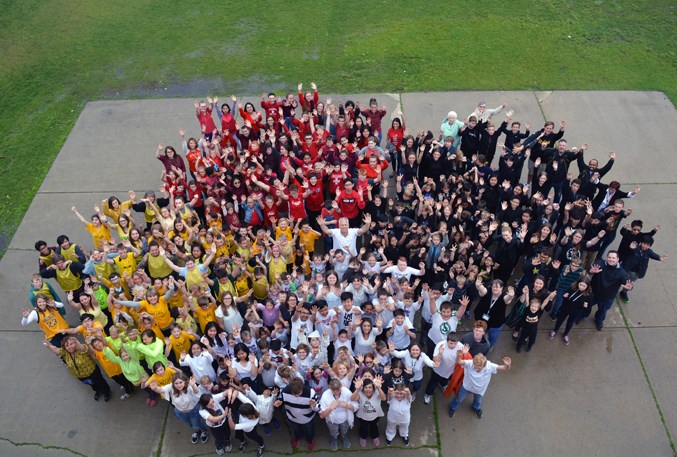INNISFAIL – The first day of summer marks an important day for Indigenous peoples across the country.
Every year, National Indigenous Peoples Day is celebrated on June 21.
Here in Innisfail, students at St. Marguerite Bourgeoys Catholic School marked the day with a liturgy, displays of cultural pieces, clothing, teachings, artwork and books, and participated in activities to celebrate and honour Canada’s Indigenous peoples.
"It's important for all of our students to understand the people who were first in this country and the people that were first in this area," said Kelly Jacobson, principal at St. Marguerite school. "It's important for them to understand the history behind that and it's also important for us to acknowledge and help our students understand the reconciliation and our need to apologize and make things right with our Indigenous people."
The day also presented an important learning opportunity for students, said Jacobson, about some of the history and respect for the culture, and for those with Indigenous roots to be proud of their heritage and celebrate it.
Jennifer Salahub is the First Nations, Metis and Inuit (FNMI) support team lead at St. Marguerite Bourgeoys School.
“(This day) represents our commitment to the Indigenous people of Canada. It’s showing everyone that we want to take part in reconciliation and that we are honouring the traditions and the culture,” said Salahub,
The day’s celebration began with the national anthem performed in an Indigenous language, noted Salahub, followed by an Indigenous prayer and a liturgy in the gymnasium. They finished the morning event with a recording of an Indigenous song performed by Indigenous singers and a drum.
“In Indigenous culture, drumming is the heart beat. It’s all about the heart beat,” she said. “We had drumming, the indigenous music as well and we had traditional pow wow music being played as the kids were coming in (for the liturgy).”
Students also learned about the role of a medicine wheel and created a human medicine wheel consisting of about 319 students from Kindergarten to Grade 9. They presented the human medicine wheel outdoors on school property.
“The medicine wheel is very important in the Indigenous culture,” said Salahub. “A lot of things in life are about the circle, like the seasons, the life cycle, the sun rising and setting and the moon cycles.”
The medicine wheel is represented by four different colours, which represent the directions of north (white), south (red), east (yellow) and west (black), she added.
Students also created a medicine wheel rock garden that included the four colours, depicted by colour coordinated stones.
“It was (made in) a big box with the medicine wheel and the four colours. Each of the stones within (the wheel) represents a student from our school,” said Salahub.
Innisfail sits on Treaty 7 land, which belongs to the Blackfoot tribe, she noted. Salahub pointed out that Indigenous peoples are not just celebrated every year on June 21. The school incorporates Indigenous culture, teachings and traditions into the school curriculum throughout the year.
Every September, the school holds Orange Shirt Day, recognizing and remembering the survivors of residential schools, explained Salahub, adding it's an important part in the reconciliation process.
“There was a part (in the reconciliation report) for the calls to action in terms of education, which we have been implementing,” said Salahub.
“This is all part of the Truth and Reconciliation Report that came out from the government. It’s about uncovering our past. Canada does not have a clean past,” she added, noting Indigenous peoples' important place in Canadian history.
“We are teaching our kids about it now because it’s important.
“It’s about teaching them about the past but also how we can make wrongs right,” Salahub concluded.



